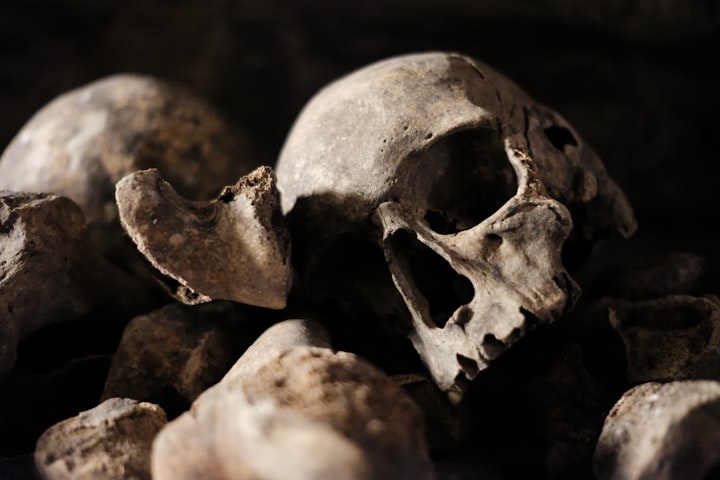Unveiling the Rituals
How the Kikuyu of Kenya Buried Their Dead

The Kikuyu people, inhabiting Kenya, possess a rich and diverse cultural heritage, which is vividly evident in their distinct set of funeral rites. Historically, the Kikuyu people left the sickly and aged individuals to die in remote locations like forests or hillsides, where they would be eaten by wild animals.
The Kikuyu people were much less elaborate about funeral rites, and it was a great taboo for a member of the tribe to touch a corpse. In his biography, Francis Hall writes about having to bury victims of disease himself because Kikuyu customs did not allow them to touch dead bodies.
These traditional rites were demonized by the missionaries and the authorities early in the 20th century. As the Kikuyu became more educated, they adopted a more Western-style of burial, which was also seen as a sign of development and social status.
Traditional Burial Practices
The Kikuyu people's funeral traditions were deeply rooted in their cultural and historical traditions. Some of the key practices included:
1. Grave digging: The sons of the deceased dug a grave facing the thingira, a man's hut, and the grave was called kibirira.
2. Burial position: The body was placed on its side, with the knees drawn up, and the head was placed on the appropriate palm.
3. Purification rituals: The diggers had to undergo purification rituals to avoid the perceived negative repercussions of touching the body.
Evolution of Kikuyu Burial Practices
During the colonial period, British administrators and Christian missionaries pressured the Kikuyu people to bury all bodies, leading to the adoption of burial as a more individualized approach to coping with death.
However, the Kikuyu people made the practice their own by including purification rituals to avoid the perceived negative repercussions of touching the body. Burial also became associated with land ownership, and in 1933, Chief Koinange used the burial of his grandfather to assert his right to the land, which the British were wrongfully occupying.
Contemporary Kikuyu Burial Traditions
Today, the Kikuyu people's funeral celebrations may vary depending on individual beliefs and financial resources. Some opt for extravagant funerals, including feasts, singing, and dancing, while others choose simpler, yet respectful, ceremonies.
The funeral process typically involves a church service with traditional Kikuyu burial songs, followed by a funeral procession to the burial location. The burial itself may take place in a cemetery or on the family's land, with some individuals opting for a simple wood casket.
Significance of Land Ownership and Burial
The Kikuyu people's beliefs and values are intricately woven into their burial practices. They historically held a deep reverence for the deceased, as evidenced by their specific burial rituals and the fear of handling the dead due to the perceived abomination associated with contact with a corpse.
Such elaborate rituals underscore the Kikuyu people's reverence and respect for the deceased and underscore their deeply held belief in the connection between life and the afterlife. The fear of touching a corpse, for instance, stemmed from the belief that contact with the dead could contaminate the living, causing illnesses or even death. Therefore, these Kikuyu funeral practices offer a vivid reflection of the profound depth of their cultural and historical roots.
The significance of land ownership and the association of burial with asserting rights to the land further underscore the cultural and historical importance of burial practices among the Kikuyu people
Influence of Modernization and Changing Trends
Despite the historical significance of traditional burial practices, modern life pressures and urbanization have brought about changes in the Kikuyu people's approach to burial. The cost of burying the dead in rural areas has become prohibitive, and urbanization has led to challenges such as limited cemetery space and growing pressure on land
As a result, there is a growing trend among Africans, including the Kikuyu people, to turn to cremation as an alternative to traditional burial
Conclusion
The burial practices of the Kikuyu people of Kenya are a reflection of their rich cultural heritage, historical traditions, and evolving societal influences. Understanding the evolution of these practices provides valuable insights into the beliefs, values, and cultural significance attached to honoring the deceased within the Kikuyu community. Despite the impact of modernization and changing trends, the cultural significance of traditional burial practices remains deeply rooted in the identity of the Kikuyu people.
Main sources
1. Njue, Jane Rose M., et al. “Death, grief and culture in Kenya: experiential strengths-based research.” The World of Bereavement. Springer, Cham, 2015. 3-23.
2.https://tradmag.ca/season-2/health-and-healing/to-bury-or-not-to-bury/
3.Droz, Yvan. (2011). Transformations of Death among the Kikuyu of Kenya; From Hyenas to Tombs.
4.https://www.frazerconsultants.com/2019/08/cultural-spotlight-kikuyu-people-of-kenya-funeral-traditions/
5.https://www.frazerconsultants.com/2019/08/cultural-spotlight-kikuyu-people-of-kenya-funeral-traditions/






Comments
There are no comments for this story
Be the first to respond and start the conversation.